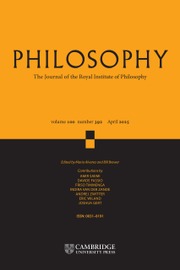No CrossRef data available.
Article contents
Abstract
My thesis is that certain non-verbal paintings such as Picasso's Guernica make (simple) arguments. If this is correct and the arguments are reasonably good, it would indicate one way that non-literary art can be cognitively valuable, since argument can provide the justification needed for knowledge or understanding. The focus is on painting, but my findings seem applicable to comparable visual art forms (a sculpture is also considered). My approach largely consists of identifying pertinent features of viable literary cognitivism and then showing how they or close analogues can be applied to non-verbal painting. The two main features are the requirements, first, that the relevant knowledge is provided significantly in virtue of the distinctive essential feature of literary fictions, i.e., their fictionality, and second, that the knowledge stems primarily from the content of the work, not from what the auditor brings to the work. Some ways that literary fiction has been taken to be argumentative are explained, and striking similarities are found between argumentative literary fiction and argumentative painting. Potential objections are addressed, and I examine a proposed way to express, in a schematized format, both the power of an argumentative painting and its relatively simple associated propositional content.
- Type
- Research Article
- Information
- Philosophy , Volume 99 , Special Issue 3: The Philosophy of Online Communication , July 2024 , pp. 379 - 407
- Copyright
- Copyright © The Author(s), 2024. Published by Cambridge University Press on behalf of The Royal Institute of Philosophy
Footnotes
Winner of the American Philosophical Association's 2024 Journal of Value Inquiry Prize.



